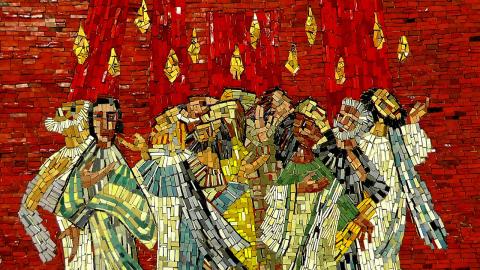What's So Great About the Acts 2 Church?
3 comments
5267 views

The book of Acts tells the compelling story about how the influence of the Good News of Jesus spread from a small, fear-filled Jewish remnant to a cross-cultural Gospel movement that would impact Rome itself. How did this happen?
My friend John DeHaan, former director of CRWRC (now known as World Renew), has taught me the key characteristics of the Acts 2 church:
In the first blog of this series, we asked what we called the Pentecost question: How has Pentecost made a difference in your neighborhood? In this blog I want to us to think about the difference between movements and programs.
In our churches we have programs for children and youth. We have evangelism and diaconal programs. Programs can be efficient ways to accomplish specific results. They usually involve commissioning or delegating people with special gifts to do certain tasks on behalf of the rest of us. They often involve finding avenues to fund these people. Programs need to be well-managed and focused on results.
Movements, on the other hand, happen when ordinary people like you and I become contagious about a shared vision and begin infecting our neighbors. True movements multiply spontaneously and exponentially like viruses. Movements are the work of all of us, not just a few specialists. Movements are like starfish. Because they are decentralized you can cut off one arm and like a starfish it will just grow a new one. Movements can be catalyzed but not “programmed.”
When my family and I first joined Madison Square Christian Reformed Church in 1981 it was more like a movement than a program. In fact, as far as I remember, Madison had virtually no organized outreach program at that time. Yet the church was growing exponentially. It was growing simply because ordinary people were seeing their own lives transformed and couldn’t wait to invite their neighbors and friends.
Please do not mistake what I am saying. I am not saying that we should do away with programs. In fact, as any movement matures it will also germinate quality programs. But I am suggesting that programs alone will not bring the transformation God desires in our world. It will take movements of ordinary, grassroots Christians who are willing to be the presence of Christ in the hard places of our neighborhoods, cities, and nations.
Do you agree that the Acts 2 church was more like a movement than a program? Can you give examples of Gospel-shaped movements that have transformed your neighborhood?
Connect to The Network and add your own question, blog, resource, or job.
Add Your Post
Comments
Thanks, Joel.
Your post helps me find words for what I have experienced and seen during at The Nehemiah Center over the past three years. I have seen the energy and synergy of a movement. And it was that energy and synergy that motivated me to write a book about what I saw and heard: On Mended Wings: Transforming Lives and Communities in Nicaragua, schduled for release in November 2012.
As a novice and observer in the world of global mission, I find myself wondering how diminishment of the energy and enthusiasm of a movement can be prevented as it begins to generate programs.
I am no expert on movements, but I think that the components common to movements are a sticky idea or goal, broad grassroots connections, a critical mass and open communication. Conversely, as these components weaken, a movement fizzles out and/or becomes a limited program.
I think you hit the proverbial nail on the head with the distinction of movements and programs.
Let's Discuss
We love your comments! Thank you for helping us uphold the Community Guidelines to make this an encouraging and respectful community for everyone.